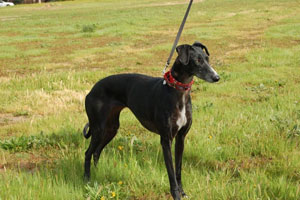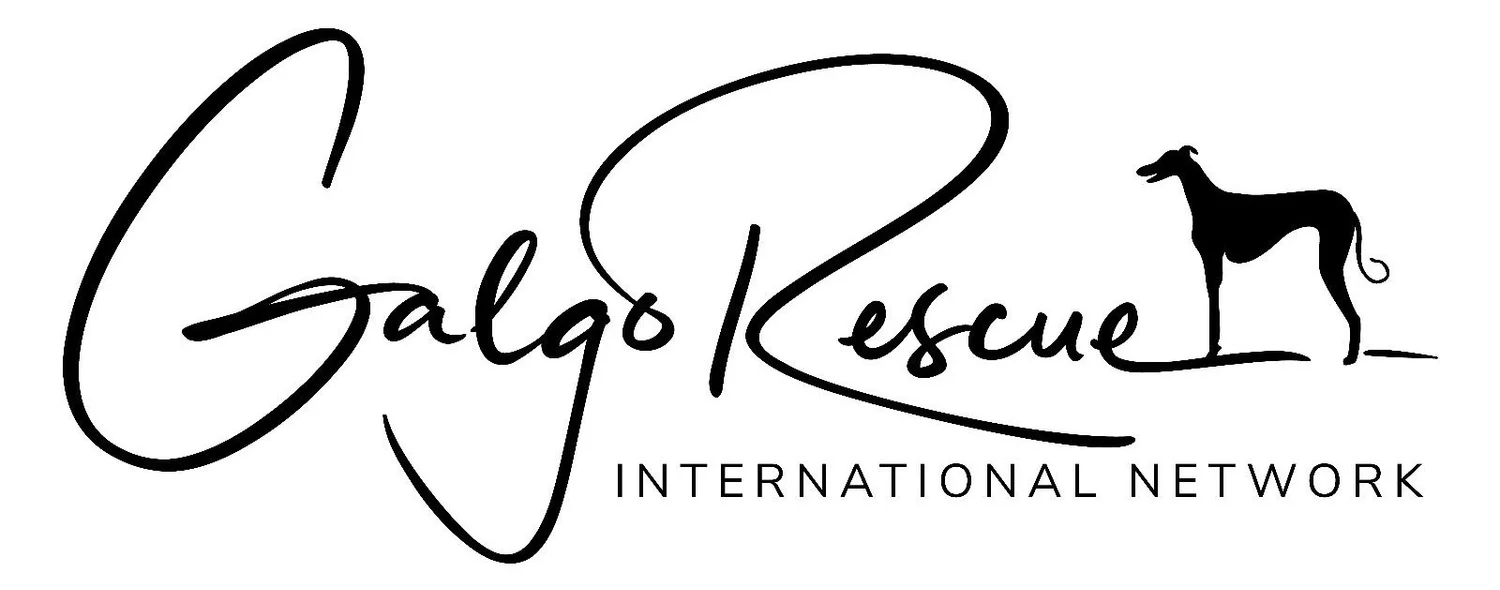 The Spanish greyhound, or galgo, is one of the most persecuted dog breeds. Galgos are used to hunt hares in the Spanish countryside. The galgos spend their lives in damp, tiny, dirty holes or windowless shacks, deprived of daylight, exercise and affection. They are typically fed only water and stale bread. At the end of the hunting season, countless are abandoned or worse.
The Spanish greyhound, or galgo, is one of the most persecuted dog breeds. Galgos are used to hunt hares in the Spanish countryside. The galgos spend their lives in damp, tiny, dirty holes or windowless shacks, deprived of daylight, exercise and affection. They are typically fed only water and stale bread. At the end of the hunting season, countless are abandoned or worse.
Sadly, the galgo's native land still views it as a second-class animal and few Spaniards will own them as pets. They are bred carelessly and used for hunting by galgueros (galgo handlers). At the end of the hunting season in Spain, the galgos deemed worthless or too costly to maintain are destroyed in a variety of inhumane ways - including being hung, dumped into abandoned wells, shot, and even burned to death.
The lucky ones are rescued by a handful of shelters in Spain, operated by dedicated individuals. Almost all of the resources to help the dogs come from outside of Spain, namely the U.S., U.K., Belgium, Denmark, France, Holland and Germany. Spaniards generally do not regard galgos as pets and thus most galgos are placed outside of Spain. Between 2005 and 2007 GRIN brought three dozen galgos back to the U.S. for adoption.
There are a handful of Spanish shelters dedicated to saving the galgos and other unwanted animals of Spain. Although more and more galgueros are willing to give their unwanted dogs to the shelters, the abuse and torture of galgos continues. Organizations like Galgo Rescue International Network are dedicated to the welfare of the Spanish Galgo and sighthounds worldwide, and assist the Spanish shelters with adoption, veterinary care, and fundraising.
The History of the Galgo
Many theories exist as to the lineage of the Spanish Galgo. The Spanish Galgo is a sighthound mix, possibly Irish greyhound and sloughi or deerhound.
The galgo is an ancient breed, named for the Gauls, a Celtic tribe that lived in the Iberian Peninsula the sixth century BC. It is thought that the Celts, who appreciated fine hunting dogs, acquired sighthounds from the Phoenician merchants who plied the Spanish coasts. The Moors, who conquered Spain in the eighth century, may have bred African sighthounds with Spanish galgos. Most of the galgos used for hunting today are mixed with Irish racing greyhounds or other breeds to produce a fast coursing dog.
Originally brought to Spain by noblepersons, the galgo was held in high esteem. After decades of theft and indiscriminant breeding by the lower classes, the galgo lost its favor and was - and still is - viewed as a "trash dog", owned only by the lower classes. The galgo was bred for hunting and coursing and is an elegant sighthound. The unscrupulous breeding brought with it beautiful variations in color, coat and size. The coats range from short hair (like that of a greyhound), to varying degrees of long and wirehair coats, as seen in the Scottish deerhound and other sighthounds. The galgo is a sighthound similar to the racing greyhound, although they are generally smaller. The purebred Galgo Espanol is 44-70 pounds and stands 23-29 inches at the shoulder.
Like all sighthounds, the galgo is fast and agile. They tend to be very playful and more than their racing counterparts. Although some have a high prey drive, many live peaceably with cats. Galgos generally do best living with others dogs as they are used to living in close quarters with others of their breed. They are capable of jumping fences and must always be leashed when outside an enclosed area. Due to lack of socializing and positive experiences with people when young, galgos can be leery of people at first. However, they bond strongly with their adoptive families and the emergence of their comical personalities is a wonderful experience!
What Happens to the Galgos?
Sadly, the life of the galgo is far from glorious. Galgos who have outlived their usefulness are often hung from trees, shot and dunped in garbage heaps, or thrown alive into deep abandoned wells. The fortunate ones are the dogs who the hunters, or "galgueros", take to one of the country's few santuaries. We have included a section on our website which contains very disturbing images of galgos in various states of torture. Click the "Grim Life of the Galgo" tab under the "Spanish Galgo" heading to view these images. But beware, they are very disturbing.
Scooby, Protectora de Animales, is an animal sanctuary located in the remote countryside of Spain a few hours northwest of Madrid. Scooby serves as a home to as many as 500 dogs at any given time, as well as cats, sheep. geese, a donkey, and even a racoon. For nearly 10 years Scooby has been rescuing animals of all shapes and sizes, many of whom have suffered at the hands of their former keepers. There are a number of shelters helping the Spanish greyhound including Galgos Sin Fronteras, SOS Galgos, Kimba, and Amigos De Los Galgos to name a few (please click the "Shelters in Spain" tab for more comprehensive information about the shelters).
The Spanish galgo depends upon the generosity and efforts of people like you. Without you, the future of the galgo is truly bleak.
